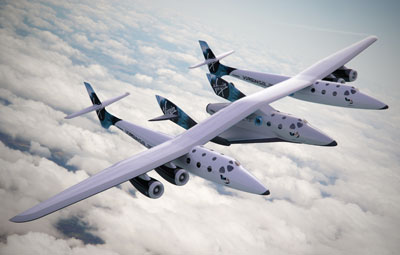Point-to-point suborbital spaceflight and military logisticsby Taylor Dinerman
|
| It is doubtful that investors will want to finance such a technology knowing that the chances of failure, at least for the early versions of the system, are pretty high. |
So how could such a business eventually emerge, and who would pay for it? A look at the history of the air cargo business may be useful. Air cargo, as opposed to air mail, was a pure product of the Second World War. In the early days of that conflict, one of the key advantages of the German Air Force was its possession of about seven hundred Ju-52 air transport, which it used to good effect in 1940 in the invasions of Norway, Holland, Belgium, and France. These aircraft were able to support advanced air and land units that otherwise would have had to be supplied by road or rail. They helped the Nazi armies to move faster and to strike harder than the British and French, who lacked any kind of large-scale air transport force.
Later in the war the US was able to use its industrial might to build up a worldwide air transport capability which simultaneously kept China supplied with a small flow of essential items over the “Hump” and was, at the same time, able to support a very large land campaign in Europe using hundreds of C-46 and C-47 transports.
After the war the US Air Force registered one of its earliest successes keeping the city of Berlin operating in the face of a Soviet blockade thanks to its airlift capability. At the same time, large numbers of surplus military aircraft were available to help jumpstart the civilian air cargo business. Over time what seemed like an expensive luxury became a vital part of the world’s economy. For Airbus and Boeing, selling cargo transports is very nearly as important to their businesses as selling passenger aircraft.
Could a similar process lead to the large-scale adoption of suborbital cargo transport? Is there a military need for the ultra-rapid delivery of supplies at intercontinental ranges? The word “logistics” is derived from the Greek word logistikos which means “skilled in calculating”. Since the Civil War the US military has, on the whole, shown that it has mastered this skill. In spite of the distance, the expense, and the climate, the US has been able to maintain its forces in Afghanistan and Iraq and has done so without disrupting the nation’s air transportation system. (The government has no need of a war to do that.)
In the future the Defense Department hopes that technology will enable it fight “kinetically” according to today’s jargon, with smaller forces and with a smaller logistics footprint. This will eventually mean that the volume and weight of supplies needed to keep a unit in combat will decrease ,while the effectiveness of the firepower used will mean that fewer and less powerful weapons will be needed. This is the path down which the US military has been moving for decades.
So could a future force operating thousands of kilometers from a large US base be resupplied by a suborbital space transport? With enough time and investment the answer is yes. The US Marine Corps Small Unit Space Transport (SUSTAIN) idea, which aims to build a vehicle that could put a 13-man squad of marines anywhere in the world within two hours, could also produce a vehicle that could carry supplies to such a unit. The requirements are probably slightly less difficult that for a full-blown personnel transport, but not by much.
Certainly there is no prospect of such a craft being developed or even designed within the next decade, but the technology for suborbital rockets is moving smartly along. Every year brings breakthroughs in materials and control systems, if not in propulsion, that make it that much more likely that cost effective (by military standards) RLV transports can be built.
| The FedExes of the future could find themselves using surplus military RLVs just as the predecessors of that firm used cast off Air Force transports. |
The ability to put a couple of tons of supplies anywhere on Earth within a short timeframe would give logistics planners a whole new way of supporting maneuver forces that would not depend on a complex and possibly vulnerable chain of bases and depots. Small mobile units would be able to cut themselves free from both ground and air resupply. It would make for some interesting possibilities.
Once such a military system has been developed, it would be relatively easy to adapt it to civilian uses. The FedExes of the future could find themselves using surplus military RLVs just as the predecessors of that firm used cast off Air Force transports.
Technology seldom moves in neat, straight lines. It’s an awkward and uneven process. Someday passengers and cargo may be able to rocket through and above the atmosphere at high Mach numbers or even at orbital speeds, but it will probably not be because some investment bankers decided to fund the development of such far-out aerospace ships.
